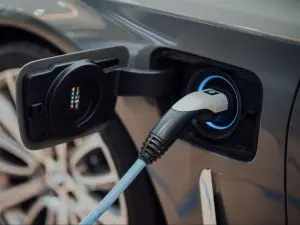Experiencing issues with your electrical outlets can be both irritating and concerning, especially when you’re not sure how to address them. Whether it’s an outlet that unexpectedly stops functioning, a circuit breaker that doesn’t seem to be the culprit, or the perplexing scenario of a half-hot outlet, pinpointing the problem is the essential first step toward a solution.
In this comprehensive guide, we’ll lead you through the process of identifying common electrical outlet troubles, offer safe and feasible DIY fixes, and help you understand when it’s time to reach out to a professional electrician. Gaining a better understanding of your electrical system and knowing how to manage basic issues can save you time, money, and most importantly, enhance your safety.
Common Outlet Problems and DIY Solutions
Inspecting for Tripped Circuit Breakers
A frequent reason an outlet may stop working is a tripped circuit breaker. To diagnose this, begin by locating your electrical panel, typically situated in the basement, garage, or utility room.
Within the panel, you’ll find a series of circuit breakers, each controlling different circuits in your home. A tripped breaker usually appears in the “off” position or sits partially between “on” and “off.” Some breakers may also show a red or orange tab when tripped.
To reset a breaker, fully switch it to the “off” position and then back to “on.” This action ensures the breaker is completely reset. If the breaker trips again immediately, it may signal an overloaded circuit or a more serious electrical issue like a short circuit or ground fault.
Testing for Faulty Outlets
Should resetting the circuit breaker not fix the problem, the next step is to test the outlet itself using a voltage tester to determine if power is reaching it.
Simply insert the tester into the outlet slots; a lit tester indicates power is present. If there’s no power, the issue might lie with the wiring or the electrical panel.
Another common culprit could be Ground Fault Circuit Interrupter (GFCI) outlets. These outlets have a reset button that can trip if a ground fault occurs. To test a GFCI outlet, press the reset button.
If the outlet resumes functioning, the issue was likely a temporary ground fault. However, if the GFCI outlet keeps tripping, it could indicate a more serious problem that needs professional attention.
Replacing Standard Outlets
If an outlet remains non-functional after ruling out a tripped circuit breaker and faulty wiring, replacing the outlet might be necessary. While replacing a standard outlet is a relatively straightforward DIY task, it requires caution and basic electrical knowledge. Begin by turning off the power to the circuit at the electrical panel to ensure your safety.
Confirm there’s no power at the outlet using a voltage tester. Then, remove the outlet cover plate and unscrew the outlet from its position.
Carefully pull the outlet out of the electrical box and disconnect the wires. When attaching the wires to the new outlet, make sure they are securely connected to the correct terminals (typically black to brass and white to silver).
After installing the new outlet, restore power at the electrical panel and test the outlet to ensure it’s functioning properly. If you’re uncomfortable with this process or encounter any issues, it’s best to consult a professional electrician.
When to Call a Delaware Professional
Indicators of Wiring Problems
Recognizing signs of wiring issues is vital. Flickering lights, warm or burning smells from outlets or switches, and sparks when plugging in appliances are all red flags that should prompt you to call a licensed electrician in Delaware.
Frequent tripping of the circuit breaker or repeated blown fuses may indicate an overloaded circuit or more severe wiring problems. Faulty wiring can be hazardous, leading to electrical fires or shocks.
Delaware’s electrical regulations mandate that all electrical equipment, wiring, and appliances must be installed and maintained safely, adhering to laws including the National Electrical Code (NEC) as adopted by the Delaware State Fire Commission.
Persistent GFCI Outlet Issues
While GFCI (Ground Fault Circuit Interrupter) outlets are designed to safeguard against ground faults, continual problems with these outlets may suggest a deeper issue. If a GFCI outlet keeps tripping and resetting doesn’t restore functionality, it could indicate a ground fault in the wiring or an issue with the outlet itself. In such cases, contacting a professional electrician is advisable to diagnose and resolve the problem.
A licensed electrician can test both the wiring and the outlet to identify the root cause of the fault and perform the necessary repairs to ensure electrical safety.
Handling Old or Historical Electrical Systems
Homes with old or historical electrical systems often require specialized attention. Older systems might not comply with current safety standards, posing significant risks like electrical shocks, fires, or other hazards. Delaware’s electrical codes require that all electrical systems be maintained safely, and any defects or hazards must be addressed to eliminate risks to residents and the structure itself.
Engaging a licensed electrician allows for a thorough assessment of the system, identification of potential issues, and execution of necessary upgrades or repairs to meet modern safety standards.
Conclusion
Addressing electrical outlet issues requires knowing when to tackle problems yourself and when to seek professional assistance. Whether you’re resetting circuit breakers, testing outlets, or replacing them, prioritizing your safety and the integrity of your electrical system is essential. For more complex challenges like wiring problems, persistent GFCI outlet issues, or upgrades to older systems, calling a licensed electrician in Delaware is necessary.
Companies such as Yoder Electric and Bradley Electric provide comprehensive electrical services tailored to the needs of residential and commercial properties in Delaware, OH. Power Up Your Home with Shockingly Great Service: Whether you’re upgrading your panel, rewiring an older home, or installing an EV charger, choose electricians with extensive experience and a deep understanding of local codes. Licensed professionals bring professionalism, transparency, and quality craftsmanship to every project, ensuring peace of mind, energy efficiency, and systems prepared for the future.
Request your free estimate today and discover why your neighbors trust reliable electrical services. With double safety checks and exceptional customer care, enjoy a safe and efficient electrical system that meets all your needs.
FAQ
What are the common signs of a malfunctioning electrical outlet that I should look out for in my Delaware home?
Common signs of a malfunctioning electrical outlet include:
- Discolored or melted plastic due to excess heat or short-circuiting.
- Smoke, sparks, or burning odors indicating a fire hazard.
- The outlet cover feeling hot to the touch, signifying bad wiring.
- Plugs falling out of the outlet due to loose connections.
- The outlet not working, which could be due to a tripped breaker, GFCI issues, or loose wiring.
How can I determine if a flickering or dimming light is related to an outlet issue or a broader electrical problem?
To determine if a flickering or dimming light is related to an outlet issue or a broader electrical problem, observe the flicker pattern. If it affects only one light, it might be a loose bulb or an outlet issue.
However, if multiple lights flicker, especially when large appliances are in use, it could indicate an overloaded circuit, loose wiring, or a failing electrical panel. Check for consistency and timing of the flicker, and if necessary, consult a professional electrician to inspect the electrical system.
What steps can I take to troubleshoot a non-functional outlet before deciding to call a professional electrician?
To troubleshoot a non-functional outlet, follow these steps:
- Check the circuit breaker to ensure it hasn’t tripped.
- Reset the GFCI outlet if applicable by pressing the “Reset” button.
- Turn off the power at the circuit breaker and inspect the outlet for loose or disconnected wires.
- Use a voltage tester to check for power at the outlet.
- If the outlet is controlled by a switch, ensure the switch is in the “ON” position.
- Inspect for any signs of damage or burnt marks on the outlet and its wiring.
Under what circumstances is it unsafe to attempt DIY repairs on electrical outlets, and when should I definitely call a licensed electrician?
Attempting DIY repairs on electrical outlets is unsafe when you lack proper training and experience or when the task involves complex or hazardous issues. You should definitely call a licensed electrician to avoid risks such as electrocution, fires, and damage to your electrical system and property.



